Strength training can help to specifically target weaknesses and improve running performance. In this article, we explore how training with machines and weights can significantly enhance your running routine.
Starting with two to three running sessions per week, supplementary strength training in the gym can make sense. The goal is not only to improve your running performance but also to contribute to injury prevention. And, as with many things in life, finding the right balance is key: strength training should complement running, not replace it, and overtraining should be avoided.
Strength Training in the Gym
In the gym, a variety of equipment is available to specifically strengthen muscle groups relevant for running. Here’s an overview of the most important muscle groups, their benefits for running, suitable equipment, and specific exercises.
Leg Muscles
Advantage in Running: Leg muscles are crucial for power transmission while running. Strong legs mean better acceleration, higher speed, and more efficient uphill running.
Suitable Equipment: Leg press, leg curl machine, leg extension machine.
Exercises:
- Leg Press: Sit in the machine and press the platform upwards with both legs. Hold the tension briefly and then slowly return to the starting position.

- Leg Curls: This exercise targets the hamstrings. Lie on your stomach in the machine, hold the weights with your feet and bend your knees to pull the weights.
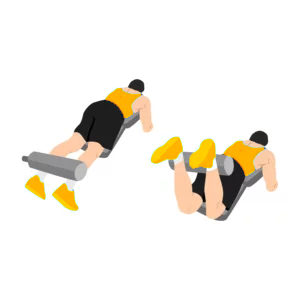
- Leg Extensions: Sit on the machine, place the weight at shin height and extend your legs to lift the weight.
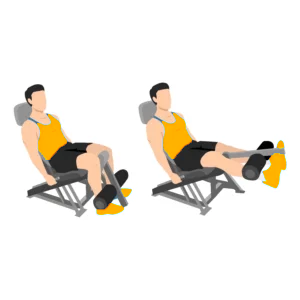
Core Muscles
Advantage in Running: A strong core stabilizes the upper body and improves running efficiency. It also helps transfer power from the legs to the upper body.
Suitable Equipment: Cable machine, back extender machine, seated crunch machine.
Exercises:
- Cable Woodchops: Stand sideways to the cable machine, grab the handle with both hands and pull the cable diagonally from top to bottom while rotating your torso.

- Back Extender Machine: Lean back on the machine and lean your thighs against the cushion. Then bend and stretch your torso to train your back muscles.
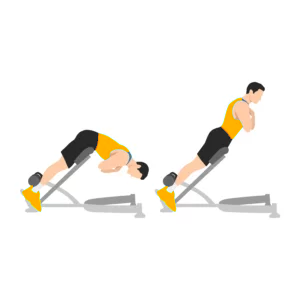
- Seated crunch machine: Adjust the seat height so that your shoulders are aligned with the backrest. Lock your legs in the support and grasp the upper handles. Contract your abdominals by pushing your torso towards your legs, keeping your neck and eyes straight. Slowly return to the starting position after maintaining the contraction.
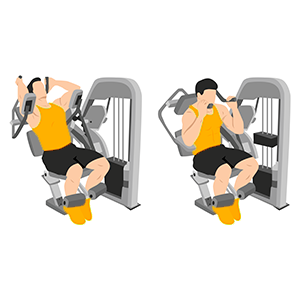
Upper Body Muscles
Advantage in Running: A strong upper body supports the running motion and helps delay fatigue. It also improves balance and coordination.
Suitable Equipment: Rowing machine, lat pulldown machine, chest press.
Exercises:
- Rowing Machine: Sit on the machine, grab the handles and pull them towards your upper body while squeezing your shoulder blades together.
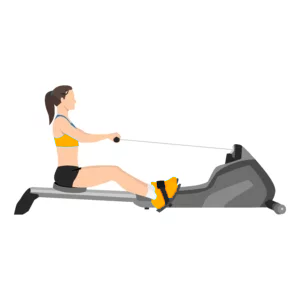
- Lat machine: Sit under the lat pulldown bar, grab it slightly wider than shoulder-width and pull it to your chest while pressing your elbows down.
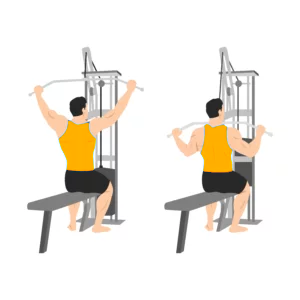
- Chest Press: Sit in the machine, adjust the handles to chest height and push them away from you. Make sure to perform the movement in a controlled manner.
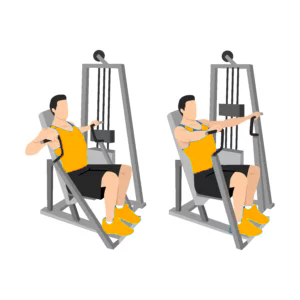
Strength Training with Body Weight
Naturally, the gym with its variety of machines and equipment offers great opportunities to specifically train muscle groups relevant for running. However, it’s important to emphasize that many of these exercises can also be effectively performed using your own body weight. This alternative is particularly useful if you can’t make it to the gym or simply love variety.
Conclusion
Strength training in the gym can be an essential part of a comprehensive running training program, not only enhancing performance but also preventing injuries. With targeted exercises on equipment, you can effectively strengthen important muscle groups such as legs, core, and upper body, which improves your running economy and efficiency. However, this training should complement running and be done in moderation to avoid overtraining.
Tips:
- Integrate 1-2 strength training sessions per week into your training plan.
- Focus on exercises that target muscle groups relevant for running.
- Pay attention to the correct execution of exercises to minimize the risk of injury.
Create a tailored and dynamic running training plan with running.COACH that optimally prepares you for your running goals based on your current fitness level. Try running.COACH for free for two weeks after your first login!



